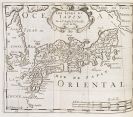
Jean-Baptiste Jouvenet
1644 Rouen
1717 Paris
The painter Jean-Baptiste Jouvenet, known as "le Grand", was born in Rouen in 1644. He was the most important member of a family of painters and sculptors. He was taught by his father Laurent II (1609–81). In 1661, when Jouvenet was 17, he travelled to Paris, where he studied under Charles Le Bruns (1619-90), who gave Jean-Baptiste Jouvenet and his colleagues large commissions in Versailles. Although he never visited Italy, Jouvenet’s work was influenced by Le Brun’s Italism. In 1668, he became a member of the Académie royal de peinture et de sculpture, which allowed him to enter his work "The first conquest of France Comté" into the "Prix de Rome". In 1672, Jean-Baptiste Jouvenet was paid for a large painting that he completed for Cardinal Séguier’s funeral. During the following year, Jouvenet executed "Christ heals the Lame" for the goldsmith’s guild, which was exceptionally well received. In 1674 the artist was made "Agréé", and in 1675, he became a member of the Académie des Beaux-Arts, on the basis of his painting "Esther and Ahasver", where he worked his way up to the position of "directeur" in 1705, and then "recteur" in 1707. From 1687, he frequently worked for Louis-François I. de Bourbon, the Prince of Conti (1717–76). He also painted the decorations in the Vértez palace (1690) under Mazarin’s patronage. Jean-Baptiste Jouvenet only exhibited his work twice, once in 1699 and once in 1705, at the official salon.
In 1706, his four large-scale works "The Raising of Lazarus", "Jesus chases the money lenders from the temple", "The Miraculous Catch of Fish" and "Christ in the House of Simon" in the Saint-Martin-des-Champs church. He reproduced these with minor changes as tapestries for Peter the Great (1672–1725) who presented them as a gift to Ludwig XV. One of the artist’s main patrons was Ludwig XIV, who paid him a pension of 1200 livres. After Jouvenet completed the painting "The Outpouring of the Holy Ghost" for the Versaille Chapel, the sum was raised to 1900 livres.
In 1713, the artist was paralysed on the right side of his body, which prevented him from using his right hand, so he began painting with his left hand. In 1716, Jean-Baptiste Jouvenet completed his last work, "The Visitation" for the Paris cathedral choir. Like most of his paintings, this work is dated, which makes it possible to follow the development of Jouvenet’s work. He was one of the most important church painters of his time. His early work was strongly influenced by Nicolas Poussin (1594–1665) and his later work by Peter Paul Rubens, whom he greatly admired. Poussin’s influence can be seen in the repeatead depictions of the deposition in Jouvenet’s works.
Jean-Baptiste Jouvenet died on 5th April 1717 in Paris.

Would you like to sell a work by Jean-Baptiste Jouvenet?
Infos for seller






